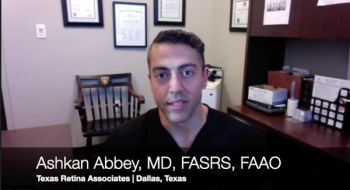
All-laser LASIK yields better outcomes on multiple levels
New Orleans-Six-month follow-up results from a randomized, prospective, contralateral eye comparison study confirm findings from earlier visits showing all-laser LASIK performed with the femtosecond laser microkeratome (IntraLase FS, IntraLase) yields superior vision outcomes compared with the same ablation procedure performed in eyes with a mechanical microkeratome-created flap, reported Daniel S. Durrie, MD, at the 2004 ISRS/AAO refractive surgery subspecialty day meeting.
New Orleans-Six-month follow-up results from a randomized, prospective, contralateral eye comparison study confirm findings from earlier visits showing all-laser LASIK performed with the femtosecond laser microkeratome (IntraLase FS, IntraLase) yields superior vision outcomes compared with the same ablation procedure performed in eyes with a mechanical microkeratome-created flap, reported Daniel S. Durrie, MD, at the 2004 ISRS/AAO refractive surgery subspecialty day meeting.
Dr. Durrie is director of refractive surgery, Durrie Vision, Overland Park, KS, and associate clinical professor of ophthalmology, University of Kansas Medical Center, Kansas City.
In his single-surgeon study, he randomly assigned 176 eyes of 88 patients undergoing wavefront-guided myopic LASIK to flap creation with the femtosecond laser microkeratome or using the Hansatome (Bausch & Lomb). The same laser (Alcon LadarVision 4000) was used for ablation in all eyes so that the only variable between groups was the method of flap creation.
In addition, the clinical outcomes of the refractive surgery were excellent for both groups. However, results of analyses of UCVA, contrast sensitivity, induced higher-order aberrations, and patient preference consistently showed statistically significant differences favoring the all-laser procedure.
For example, on the first postop day, about 40% of eyes in the femtosecond laser group achieved UCVA of 20/16 or better compared with 24% of eyes operated on with the Hansatome; at 6 months, rates of UCVA of 20/16 or better in the two groups were 66% and 48%, respectively.
When asked which eye they preferred as providing better overall vision, the femtosecond laser eye was selected by about 75% of patients at 1 month and by nearly two-thirds at 6 months. Further analyses showed there were significant correlations between eye preference and both better UCVA and better contrast sensitivity, Dr. Durrie reported.
"I undertook this study without any pre-existing bias and I admit I was surprised by the results," Dr. Durrie said. "There is a need for longer follow-up and additional prospective multicenter studies to validate my findings. Currently, however, these results suggest laser keratomes are the next step in the quest for quality vision."
On the other hand, previous studies have found no significant difference in UCVA between the Intralase and the Hansatome with the new compression head (Kezirian GM, Stonecipher KG, J Cataract Refract Surg 2004;30:804-811) or higher-order aberrations (study by Stephen G. Slade, April 2004).
To explore the underlying reason for the better results with the all-laser procedure, Dr. Durrie first ruled out any role of differences in predictability. Comparisons of mean spherical equivalent and cylinder at 6 months post-LASIK showed the values were not statistically significantly different between the femtosecond laser and mechanical microkeratome groups.
"It is important to consider whether the difference could be accounted for by a need to make a nomogram adjustment," Dr. Durrie said. "However, the amounts of residual myopia and cylinder were comparable in the two study groups.
"If predictability was not an issue and the visual outcomes are better with respect to both visual acuity and contrast sensitivity, then it seems the mechanism must relate to a better ablation profile achieved in eyes having femtosecond laser-created flaps," Dr. Durrie said.
There are two lines of reasoning to support that theory-using the femtosecond laser leaves a dry homogeneous surface for the excimer laser to treat and it results in a better overall flap architecture.
Dr. Durrie noted that high-resolution ultrasound images show that when using a mechanical keratome, there is variability in central thickness across flaps as well as significant variability regionally within individual flaps. As a result, there are differences in the features of the stromal bed collagen being exposed to the laser that may affect the ablation.
In addition, the use of lubricating fluid for mechanical microkeratomes presents an issue of fluid control in the bed that may affect the consistency of laser ablation. That problem is eliminated when using the femtosecond laser.
Newsletter
Don’t miss out—get Ophthalmology Times updates on the latest clinical advancements and expert interviews, straight to your inbox.





















































.png)


